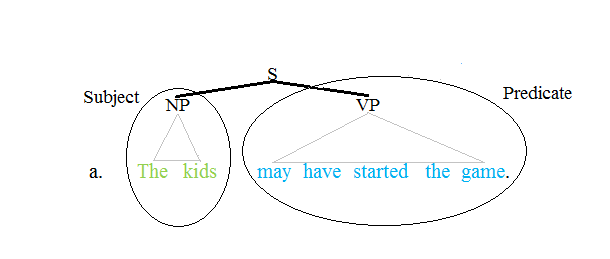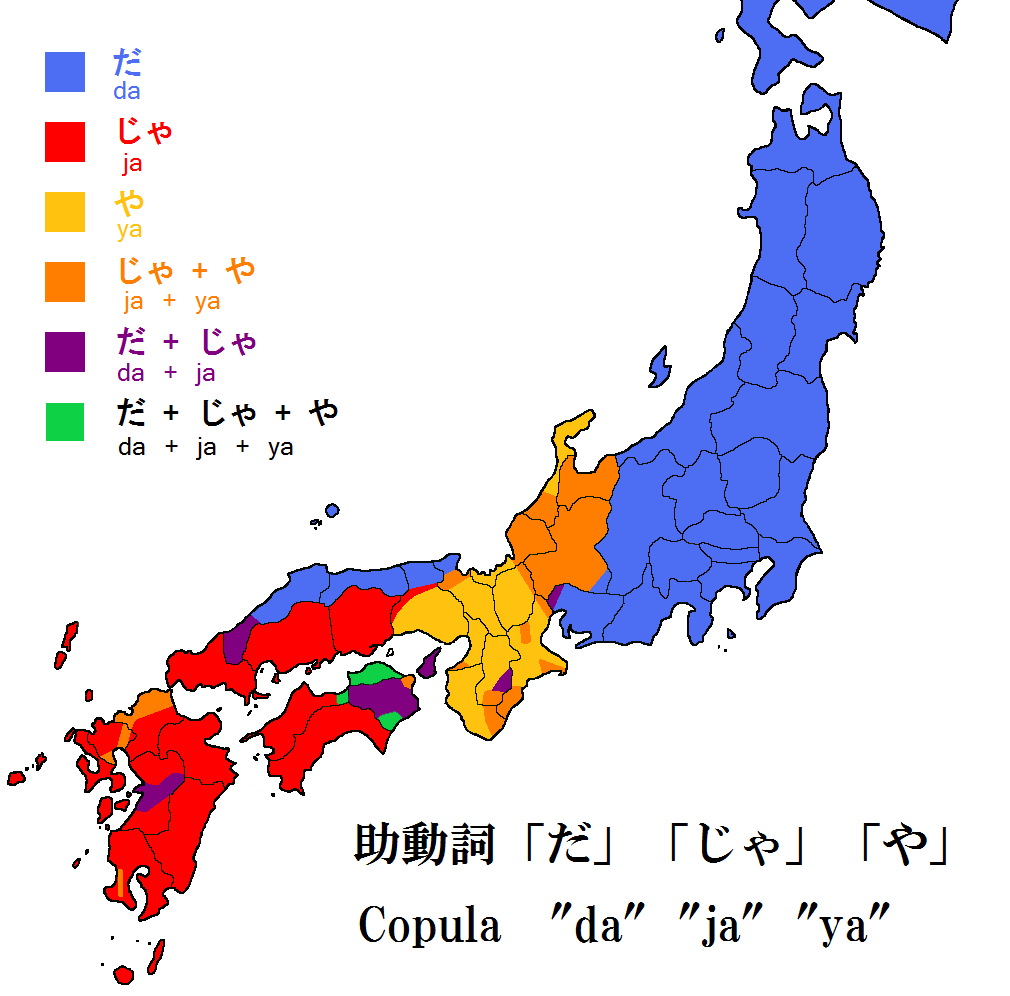|
Inverse Copular Construction
In linguistics, inverse copular constructions, named after Moro (1997), are a type of inversion in English where canonical SCP word order (subject- copula- predicative expression, e.g. ''Fred is the plumber'') is reversed in a sense, so that one appears to have the order PCS instead (predicative expression-copula-subject, e.g. ''The plumber is Fred''). The verb in these constructions is always the copula ''be'' (''am'', ''are'', ''is'', ''was'', ''were''). Inverse copular constructions are intriguing because they render the distinction between subject and predicative expression difficult to maintain. The confusion has led to focused study of these constructions,Inverse copular constructions have been explored in great depth. See Moro (1997) for the original proposal, Heycock and Kroch (1998), Pereltsvaig (2001), Mikkelsen (2005). and their impact on the theory of grammar may be great since they appear to challenge the initial binary division of the sentence (S) into a subject noun ph ... [...More Info...] [...Related Items...] OR: [Wikipedia] [Google] [Baidu] |
Inversion (linguistics)
In linguistics, inversion is any of several grammatical constructions where two expressions switch their canonical order of appearance, that is, they invert. There are several types of subject-verb inversion in English: ''locative inversion'', ''directive inversion'', ''copular inversion'', and ''quotative inversion''. The most frequent type of inversion in English language, English is subject–auxiliary inversion in which an English auxiliaries, auxiliary verb changes places with its subject (grammar), subject; it often occurs in questions, such as ''Are you coming?'', with the subject ''you'' is switched with the auxiliary ''are''. In many other languages, especially those with a freer word order than English, inversion can take place with a variety of verbs (not just auxiliaries) and with other syntactic categories as well. When a layered phrase structure grammar, constituency-based analysis of sentence structure is used, inversion often results in the discontinuity (linguistic ... [...More Info...] [...Related Items...] OR: [Wikipedia] [Google] [Baidu] |
Dependency Grammar
Dependency grammar (DG) is a class of modern grammatical theories that are all based on the dependency relation (as opposed to the ''constituency relation'' of phrase structure) and that can be traced back primarily to the work of Lucien Tesnière. Dependency is the notion that linguistic units, e.g. words, are connected to each other by directed links. The (finite) verb is taken to be the structural center of clause structure. All other syntactic units (words) are either directly or indirectly connected to the verb in terms of the directed links, which are called ''dependencies''. Dependency grammar differs from phrase structure grammar in that while it can identify phrases it tends to overlook phrasal nodes. A dependency structure is determined by the relation between a word (a head) and its dependents. Dependency structures are flatter than phrase structures in part because they lack a finite verb phrase constituent, and they are thus well suited for the analysis of languages ... [...More Info...] [...Related Items...] OR: [Wikipedia] [Google] [Baidu] |
Generative Syntax
Generative grammar, or generativism , is a linguistic theory that regards linguistics as the study of a hypothesised innate grammatical structure. It is a biological or biologistic modification of earlier structuralist theories of linguistics, deriving ultimately from glossematics. Generative grammar considers grammar as a system of rules that generates exactly those combinations of words that form grammatical sentences in a given language. It is a system of explicit rules that may apply repeatedly to generate an indefinite number of sentences which can be as long as one wants them to be. The difference from structural and functional models is that the object is base-generated within the verb phrase in generative grammar. This purportedly cognitive structure is thought of as being a part of a universal grammar, a syntactic structure which is caused by a genetic mutation in humans. Generativists have created numerous theories to make the NP VP (NP) analysis work in natural la ... [...More Info...] [...Related Items...] OR: [Wikipedia] [Google] [Baidu] |
Syntax
In linguistics, syntax () is the study of how words and morphemes combine to form larger units such as phrases and sentences. Central concerns of syntax include word order, grammatical relations, hierarchical sentence structure ( constituency), agreement, the nature of crosslinguistic variation, and the relationship between form and meaning (semantics). There are numerous approaches to syntax that differ in their central assumptions and goals. Etymology The word ''syntax'' comes from Ancient Greek roots: "coordination", which consists of ''syn'', "together", and ''táxis'', "ordering". Topics The field of syntax contains a number of various topics that a syntactic theory is often designed to handle. The relation between the topics is treated differently in different theories, and some of them may not be considered to be distinct but instead to be derived from one another (i.e. word order can be seen as the result of movement rules derived from grammatical relations). Se ... [...More Info...] [...Related Items...] OR: [Wikipedia] [Google] [Baidu] |
Predicate (grammar)
The term predicate is used in one of two ways in linguistics and its subfields. The first defines a predicate as everything in a standard declarative sentence except the subject, and the other views it as just the main content verb or associated predicative expression of a clause. Thus, by the first definition the predicate of the sentence ''Frank likes cake'' is ''likes cake''. By the second definition, the predicate of the same sentence is just the content verb ''likes'', whereby ''Frank'' and ''cake'' are the arguments of this predicate. Differences between these two definitions can lead to confusion. Syntax Traditional grammar The notion of a predicate in traditional grammar traces back to Aristotelian logic. A predicate is seen as a property that a subject has or is characterized by. A predicate is therefore an expression that can be ''true of'' something. Thus, the expression "is moving" is true of anything that is moving. This classical understanding of predicates ... [...More Info...] [...Related Items...] OR: [Wikipedia] [Google] [Baidu] |
Phrase Structure Grammar
The term phrase structure grammar was originally introduced by Noam Chomsky as the term for grammar studied previously by Emil Post and Axel Thue (Post canonical systems). Some authors, however, reserve the term for more restricted grammars in the Chomsky hierarchy: context-sensitive grammars or context-free grammars. In a broader sense, phrase structure grammars are also known as ''constituency grammars''. The defining trait of phrase structure grammars is thus their adherence to the constituency relation, as opposed to the dependency relation of dependency grammars. Constituency relation In linguistics, phrase structure grammars are all those grammars that are based on the constituency relation, as opposed to the dependency relation associated with dependency grammars; hence, phrase structure grammars are also known as constituency grammars. Any of several related theories for the parsing of natural language qualify as constituency grammars, and most of them have been develope ... [...More Info...] [...Related Items...] OR: [Wikipedia] [Google] [Baidu] |
Inversion (linguistics)
In linguistics, inversion is any of several grammatical constructions where two expressions switch their canonical order of appearance, that is, they invert. There are several types of subject-verb inversion in English: ''locative inversion'', ''directive inversion'', ''copular inversion'', and ''quotative inversion''. The most frequent type of inversion in English language, English is subject–auxiliary inversion in which an English auxiliaries, auxiliary verb changes places with its subject (grammar), subject; it often occurs in questions, such as ''Are you coming?'', with the subject ''you'' is switched with the auxiliary ''are''. In many other languages, especially those with a freer word order than English, inversion can take place with a variety of verbs (not just auxiliaries) and with other syntactic categories as well. When a layered phrase structure grammar, constituency-based analysis of sentence structure is used, inversion often results in the discontinuity (linguistic ... [...More Info...] [...Related Items...] OR: [Wikipedia] [Google] [Baidu] |
Discontinuity (linguistics)
In linguistics, a discontinuity occurs when a given word or phrase is separated from another word or phrase that it modifies in such a manner that a direct connection cannot be established between the two without incurring crossing lines in the tree structure. The terminology that is employed to denote discontinuities varies depending on the theory of syntax at hand. The terms ''discontinuous constituent'', ''displacement'', ''long distance dependency'', ''unbounded dependency'', and ''projectivity violation'' are largely synonymous with the term ''discontinuity''. There are various types of discontinuities, the most prominent and widely studied of these being topicalization, wh-fronting, scrambling, and extraposition. Natural languages vary with respect to the types of discontinuities that they permit. The fixed word order of English allows for relatively few discontinuities compared to, for instance, the Slavic languages, which are much more permissive. Even compared to a closely ... [...More Info...] [...Related Items...] OR: [Wikipedia] [Google] [Baidu] |
Phrase Structure Rules
Phrase structure rules are a type of rewrite rule used to describe a given language's syntax and are closely associated with the early stages of transformational grammar, proposed by Noam Chomsky in 1957. They are used to break down a natural language sentence into its constituent parts, also known as syntactic categories, including both lexical categories (parts of speech) and phrasal categories. A grammar that uses phrase structure rules is a type of phrase structure grammar. Phrase structure rules as they are commonly employed operate according to the constituency relation, and a grammar that employs phrase structure rules is therefore a ''constituency grammar''; as such, it stands in contrast to ''dependency grammars'', which are based on the dependency relation. Definition and examples Phrase structure rules are usually of the following form: :A \to B \quad C meaning that the constituent A is separated into the two subconstituents B and C. Some examples for English are a ... [...More Info...] [...Related Items...] OR: [Wikipedia] [Google] [Baidu] |
Copula (linguistics)
In linguistics, a copula (plural: copulas or copulae; abbreviated ) is a word or phrase that links the subject of a sentence to a subject complement, such as the word ''is'' in the sentence "The sky is blue" or the phrase ''was not being'' in the sentence "It was not being co-operative." The word ''copula'' derives from the Latin noun for a "link" or "tie" that connects two different things. A copula is often a verb or a verb-like word, though this is not universally the case. A verb that is a copula is sometimes called a copulative or copular verb. In English primary education grammar courses, a copula is often called a linking verb. In other languages, copulas show more resemblances to pronouns, as in Classical Chinese and Guarani, or may take the form of suffixes attached to a noun, as in Korean, Beja, and Inuit languages. Most languages have one main copula, although some (like Spanish, Portuguese and Thai) have more than one, while others have none. In the case of Eng ... [...More Info...] [...Related Items...] OR: [Wikipedia] [Google] [Baidu] |

.jpg)


.png)


